40 Iconic Japanese Alcoholic Drinks You Need to Try
Japanese alcoholic drinks represent a fascinating cultural tapestry woven with centuries of traditional craftsmanship and innovative brewing techniques.
These beverages reflect the nuanced spirit of a nation passionate about refined taste experiences.
Each drink carries a unique narrative of regional ingredients and meticulous preparation methods.
Some offerings sparkle with delicate complexity, while others boast robust and bold flavor profiles.
The brewing landscape ranges from ancient fermentation practices to modern distillation artistry.
Fermented rice, sweet potato, and botanical elements converge to create extraordinary liquid compositions that tantalize sophisticated palates.
These drinks transcend mere beverages, embodying social connections and ritualistic celebrations deeply rooted in japanese social interactions.
Prepare to journey through 32 signature japanese alcoholic drinks that will revolutionize your understanding of liquid craftsmanship:
Japanese Alcoholic Beverage Types You Should Experience
Japan’s drinks scene is diverse, offering everything from delicate sake to robust shochu. Explore what’s poured in izakayas and family gatherings alike.
Umeshu
Umeshu is a traditional Japanese liqueur crafted by steeping ume plums in alcohol and sugar, creating a uniquely bittersweet drink with complex fruity notes.
Japanese households and bars have perfected this preservation method for generations, typically using rock sugar and ripe or green ume plums as primary ingredients.
Shochu serves as the most common alcohol base, though other neutral spirits work equally well in the process.
Home brewers and commercial producers create multiple variations by experimenting with different sweeteners like honey or black sugar.
Artisan versions might incorporate additional flavor elements to enhance the original recipe.
Bartenders and drink enthusiasts enjoy umeshu served straight, over ice, or mixed with water, tea, or soda.
Japanese families often make this liqueur during summer when ume plums are abundant and ripe.
Regional differences in preparation methods contribute to the drink's rich cultural significance.
Junmai
Junmai is a pure, traditional Japanese rice wine crafted with meticulous precision using only four essential ingredients: rice, koji, yeast, and water.
Brewers polish rice grains to 70%, preserving the core of each kernel for a distinctive brewing process.
This sake style delivers a robust, earthy flavor profile with surprising lightness and complexity.
Junmai stands out for its rich, full-bodied character that pairs wonderfully with substantial meals.
Brewers carefully avoid adding alcohol or sugar, maintaining strict traditional brewing standards.
Its versatility allows serving at multiple temperatures, from chilled to warm.
Sake enthusiasts appreciate junmai for its authentic taste and traditional production methods.
Japanese brewing traditions shine through each carefully crafted batch of this exceptional rice wine.
Japanese Whisky
Japanese whisky emerged from Scottish whiskey traditions, pioneering a meticulous craft that transformed spirits through precise double distillation of malted barley.
Shinjiro Torii and Masataka Taketsuru launched Japan's whisky revolution in 1923, establishing the groundbreaking Yamazaki distillery in Kyoto as their initial collaborative venture.
These innovative spirits feature complex aging processes using diverse oak casks, including American, Scottish, Sherry, and rare Mizunara oak barrels.
Occasional peating techniques involve drying grains over smoked peat, adding nuanced flavor profiles.
Fermentation methods carefully transform malted grains into sophisticated beverages.
Taketsuru later founded his independent Nikka distillery on Hokkaido, expanding Japanese whisky's global reputation.
Distillation techniques mirror Scottish traditions while developing unique Japanese characteristics.
Each bottle represents generations of refined expertise and meticulous craftsmanship.
Awamori
Awamori is Okinawa's iconic spirit distilled from long-grained rice and black koji mold, creating a unique beverage with deep historical roots in Japanese alcohol production.
Ancient Okinawan traditions developed this potent drink through a complex fermentation process that distinguishes it from other Japanese spirits.
Skilled artisans carefully craft awamori using traditional methods passed down through generations.
Clay pot aging enhances the liquid's smooth character and complexity over time.
Locals typically serve awamori with water and ice, allowing drinkers to customize their experience.
Alcohol content ranges between 25-43% proof, making it stronger than sake.
Okinawan restaurants and bars feature this regional specialty as a cultural centerpiece.
Distilleries continue preserving this centuries-old brewing technique that reflects the island's rich culinary heritage.
Chuhai
Chuhai represents a refreshing Japanese mixed drink combining shochu or vodka with fruit-flavored soda water, originating in Tokyo izakayas.
Its name blends "shochu" and "highball" to describe this light-alcohol beverage crafted with creative flavor combinations.
Traditional recipes use Japanese shochu distilled from barley, sweet potatoes, rice, or buckwheat as the primary spirit.
Modern versions often substitute vodka for a smoother taste profile.
Fruity sodas, juices, and syrups add vibrant dimensions to the classic mixture.
Different regions in Japan experiment with unique ingredient combinations.
Commercial versions now come in canned formats for convenient consumption.
Izakayas continue to serve innovative chuhai variations that delight casual drinkers seeking a mild alcoholic experience.
Daiginjo
Daiginjo is a premium sake variety distinguished by its meticulous rice polishing process, where at least 50% of each rice grain's outer layer is carefully removed.
Brewers create this elegant sake using only four key ingredients: polished rice, water, koji mold, and yeast.
Serving chilled highlights its sophisticated profile, revealing light, smooth, and incredibly fragrant characteristics that set it apart from other sake styles.
Sommelier circles praise its refined flavor nuances and exceptional quality.
Traditional Japanese drinking etiquette recommends pairing daiginjo with simple, delicate dishes that complement its subtle taste.
Alcohol content can be adjusted by adding distilled brewers alcohol, though Junmai Daiginjo maintains a pure composition without additives.
Connoisseurs typically enjoy this premium sake as an aperitif or digestif.
Sophisticated drinkers value its complex yet clean flavor profile that represents Japanese brewing excellence.
Nigori
Nigori sake glimmers with a distinctive cloudy appearance that sets it apart from traditional clear sake varieties.
Rice solids retained through rough filtration create a creamy, sweeter profile that distinguishes this unique beverage.
Japanese brewers carefully craft this style with specialized techniques that preserve delicate rice particles during processing.
Mild and fruity notes emerge from its unconventional production method, offering a more complex drinking experience.
Serving temperatures matter significantly, with nigori always recommended to be well-chilled before consumption.
Spicy Japanese and international dishes complement its smooth texture remarkably well.
Gentle shaking before pouring helps distribute the rice sediment evenly throughout the liquid.
Sake enthusiasts appreciate its rich, distinctive character that bridges traditional brewing methods with modern palate preferences.
Sparkling Sake
Sparkling sake bursts with effervescence and innovation, transforming traditional Japanese rice wine into a refreshing, lighter beverage.
Brewers craft this modern drink through natural tank fermentation, direct carbonation, or bottle-based second fermentation methods.
Alcohol content typically ranges between 8-10% ABV, making it more approachable than standard sake.
Flavor profiles span from delicate and fruity to robust and earthy, offering diverse sensory experiences.
Clear or cloudy appearances depend on specific filtration techniques used during production.
Japanese breweries developed sparkling sake to attract new consumers and expand sake's global appeal.
Younger drinkers especially enjoy its playful, less intense character compared to traditional sake varieties.
Small bubbles and crisp taste make this beverage a contemporary twist on an ancient brewing tradition.
Japanese Rice Lager
Japanese rice lagers offer a supremely crisp and refreshing beer experience that originated in Japan's brewing traditions.
International craft breweries now produce this light-bodied style using approximately one-third rice and two-thirds barley in their grain bill.
Brewers carefully balance hops and malts to create a clean drinking profile with minimal complexity.
Pale in color and exceptionally smooth, these lagers typically range around 5% alcohol by volume.
Their dry finish and lightweight character make them perfect companions for diverse cuisines.
Japanese rice lagers appeal to beer drinkers seeking a straightforward, easy-drinking beverage.
Most brands deliver a subtle, clean taste without heavy flavors or intense bitterness.
Restaurants and bars worldwide now feature these approachable beers as a popular alternative to traditional lager styles.
Sake
Sake represents a legendary Japanese alcoholic beverage originating from fermented rice with complex brewing techniques dating to the 3rd century.
Japanese brewers transform polished rice kernels through a precise fermentation process involving yeast, koji mold, and water to create this national drink.
Brewery experts carefully polish rice grains to remove outer layers that might introduce unwanted flavors, ensuring premium quality.
Traditional brewing methods generate multiple sake styles determined by pasteurization, filtration, and alcohol content variations.
Professional sake makers develop distinctive taste profiles ranging from light and crisp to rich and complex.
Premium varieties typically serve best when chilled or at room temperature, complementing traditional Japanese cuisine.
Sophisticated brewing techniques require significant skill and generations of inherited knowledge.
Cultural significance makes sake more than just an alcoholic beverage, representing centuries of Japanese culinary craftsmanship.
Midori
Midori is a distinctive Japanese melon liqueur renowned for its bright green color and sweet melon essence derived from premium yubari and musk melons.
Launched initially as Hermes Melon Liqueur in 1964, the drink gained international fame after its 1978 debut at New York's iconic Studio 54.
Japanese producers carefully craft the liqueur using a base spirit infused with melon extracts, sugar, and brandy to create its signature flavor profile.
Artificial coloring ensures the vibrant green hue that makes Midori instantly recognizable.
Bartenders frequently mix the liqueur with citrus-based spirits and fruit juices for creative cocktails.
Global production expanded beyond Japan, with manufacturing sites now in Mexico and France.
Smooth and sweet, Midori offers a unique taste experience that bridges traditional Japanese ingredients with modern mixology.
Cocktail enthusiasts appreciate its versatility and distinctive melon flavor.
Shochu
Shochu is a versatile Japanese spirit distilled from fermented koji mold and unique ingredients like barley, sweet potatoes, rice, and buckwheat, offering a distinctive flavor profile that reflects its original base ingredient.
Originating in the 16th century, this traditional alcohol stands out for its single-distillation process that preserves the essence of its core components.
Honkaku shochu represents the highest quality, carefully crafted to showcase the true character of its primary ingredient.
Typically bottled at 25% alcohol by volume, shochu differs from other spirits through its pure production method.
Japanese bartenders and home enthusiasts enjoy drinking it straight, on the rocks, or mixed in refreshing cocktails.
Small-batch producers continue to experiment with unconventional ingredients like chestnuts, sesame, and perilla leaves.
Unlike many spirits, shochu remains unaged, maintaining its raw and authentic taste profile.
Kamikaze
Kamikaze cocktails blend sharp vodka, zesty citrus, and smooth triple sec into a potent drink symbolizing Japanese wartime fighter pilots.
Japanese bartenders crafted this cocktail during post-World War II American occupation in Tokyo.
Balanced proportions of equal vodka, triple sec, and fresh lime juice create its signature crisp taste.
Mixologists typically serve this cocktail chilled and straight up in a martini glass.
Military terminology inspired its provocative name meaning "divine wind" in Japanese.
Classic preparations require freshly squeezed citrus for maximum flavor complexity.
Bar patrons enjoy its strong yet refreshing profile as a popular party drink.
Professional bartenders consider this cocktail a standard test of mixing skill and precision.
Mugi Shochu
Mugi shochu stands out as a smooth Japanese distilled spirit crafted from fermented barley mash with koji mold, delivering a crisp and versatile drinking experience.
Unaged varieties offer a mild, fresh profile that delights senses with clean flavors.
Oak-aged versions develop a light amber color and mellow character that enhances complexity.
Brewers typically produce this spirit at 25% alcohol by volume, making it lighter than many other spirits.
Japanese drinkers enjoy mugi shochu served on the rocks or mixed with cold or warm water.
Regional distilleries across Japan pride themselves on creating unique expressions of this traditional beverage.
Barley selection and fermentation techniques significantly influence the final taste and quality.
Smooth and approachable, mugi shochu represents a distinctive element of Japanese drinking culture.
Sake Bomb
Sake Bombs explode with energetic drinking culture, combining Japanese sake and beer in a playful, interactive cocktail ritual where drinkers dramatically drop a sake shot into a beer glass.
American soldiers likely invented this provocative drink during post-World War II Japan, creating a unique drinking experience far more popular in the United States than in its supposed homeland.
Strategic chopsticks balance the sake shot over a beer glass, waiting for a forceful table slam that triggers the shot's dramatic plunge.
Participants must quickly consume the mixing liquids after the shot drops, transforming the separate drinks into an instantaneous blended beverage.
Traditional Japanese bars occasionally serve this spirited cocktail, though its origins remain somewhat contested.
Military personnel popularized the dramatic drinking method, turning it into a social spectacle.
Sake's smooth rice wine combines with beer's crisp texture, creating an unexpected flavor profile.
Rowdy drinking groups especially enjoy the theatrical preparation and rapid consumption of this unique beverage.
Highball (Japan)
Haiboruor Japanese highball revolutionizes classic cocktail preparation through meticulous crafting techniques rooted in precision and aesthetic perfection.
Japanese whisky and soda water combine in an elegantly simple drink that demands extraordinary attention to detail.
Professional bartenders select premium Japanese whisky as the cocktail's foundation.
Precise ice carving creates perfectly shaped cubes that frost delicately when stirred.
Thirteen clockwise stirs represent a ritualistic approach to mixing the drink.
Specific pouring techniques ensure smooth blending of whisky and soda water.
Optional lemon garnish adds subtle citrus complexity.
Izakayas across Japan serve variations ranging from high-end to budget-friendly versions, making this cocktail a nationwide cultural experience.
Honjozo
Honjozoor honjozo-shu embodies a distinctive Japanese rice wine crafted with polished rice, koji mold, and a strategic splash of distilled alcohol that enhances its flavor profile.
Brewers carefully add brewer's alcohol during fermentation to create a lighter, more aromatic sake with increased complexity.
This technique allows the drink to develop a crisp, smooth texture that sets it apart from traditional sake varieties.
Japanese sake makers use precise rice polishing methods to ensure high-quality ingredients.
Alcohol content typically ranges between 14-16%, making it a balanced beverage for diverse drinking occasions.
Regional breweries across Japan specialize in producing unique honjozo-shu variations.
Serving temperatures can vary from chilled to gently warmed, depending on personal preference.
Sake enthusiasts often pair this drink with light seafood and subtle Japanese dishes.
Doburoku
Doburoku is a traditional Japanese unfiltered sake that embodies raw, rustic brewing techniques with its distinctive cloudy white appearance and coarse texture.
Originating from sacred shrine and farmhouse production, this unique sake carries a slightly acidic flavor profile that sets it apart from refined sake varieties.
Liquor taxation laws transformed home-brewing practices, restricting doburoku production to specialized regions called tokku.
Ancient brewing methods involved local farmers and religious communities crafting this distinctive beverage using natural fermentation techniques.
Unfiltered rice sediment gives doburoku its signature milky appearance and textured mouthfeel.
Fermentation processes create complex flavor nuances that distinguish this sake from commercial varieties.
Modern regulations carefully preserve doburoku's traditional brewing heritage while maintaining strict production standards.
Japanese sake enthusiasts prize doburoku for its authentic and unprocessed character, connecting contemporary drinkers with centuries-old brewing traditions.
Taruzake
Taruzake represents a traditional Japanese sake uniquely infused with cedar wood essence through barrel aging.
Ancient Japanese brewers originally transported sake in wooden barrels, naturally developing this distinctive beverage style.
Yoshino cedar from Nara prefecture provides the highest quality wooden containers for sake production.
Cedar barrels impart a subtle, rich woodsy aroma and flavor to the alcohol during storage.
Brewers carefully select barrel aging duration to enhance the sake's complex characteristics.
Room temperature or chilled serving styles maximize taruzake's flavor profile.
Deep-fried dishes and grilled chicken pair exceptionally well with this distinctive sake variety.
Centuries of brewing expertise contribute to taruzake's nuanced and aromatic drinking experience.
Ginjo
Ginjo sake emerges as a luxurious Japanese beverage distinguished by its meticulous production process, where premium rice undergoes rigorous polishing to remove at least 40% of its outer layer.
Specialized brewing techniques transform the carefully selected rice into an elegant drink with extraordinary complexity and depth.
Delicate fermentation methods create refined, fragrant aromas that distinguish ginjo from standard sake varieties.
Master brewers carefully control temperature and brewing stages to enhance the sake's subtle flavor profile.
Cold serving temperatures help preserve and highlight the drink's nuanced characteristics.
Gentle brewing processes result in a smooth, light-bodied sake with sophisticated taste notes.
Premium rice selection ensures exceptional quality and remarkable drinking experience.
Minimal rice grain remnants contribute to ginjo's exceptional smoothness and delicate flavor complexity.
Kaku Highball
Kaku highball is a refreshing Japanese cocktail featuring Kakubin whisky and soda water, traditionally served in a large glass mug with ice.
Bartenders create this light drink by squeezing a fresh lemon wedge and pouring Kakubin, a golden blended whisky with 40% ABV and a sweet grain-like aroma.
Kakubin's creamy flavor profile includes subtle fruity and spicy undertones with a crisp dry finish.
Mixologists prefer this whisky for its versatile and smooth character, making it ideal for cocktails.
Japanese bars and restaurants commonly serve this easy-drinking beverage as a popular accompaniment to various dishes.
Soda water adds effervescence and lightness to the drink, enhancing its refreshing quality.
While Japanese highballs can be made with different whiskies, Kakubin remains the standard choice for most establishments.
Lemon wedges contribute a bright citrus note that complements the whisky's complex flavor profile.
Namazake
Namazake stands as a raw, unpasteurized sake that bursts with intense, fresh flavors unique to Japanese brewing traditions.
Brewers craft this delicate rice beverage using traditional sake-making methods, bottling it without the standard pasteurization process.
Refrigeration becomes crucial for preserving its distinctive taste and preventing spoilage.
Serving chilled enhances its complex flavor profile and aromatic qualities.
Seasonal variations emerge during different brewing periods, offering subtle flavor nuances.
Sake enthusiasts prize namazake for its crisp, unfiltered character.
Alcohol content typically ranges between 14-16%.
Japanese restaurants and specialty sake bars often feature this premium beverage as a premium drinking experience.
Genshu
Genshu is a potent, undiluted sake that delivers an intense drinking experience with its naturally high alcohol content hovering around 20% ABV.
Japanese brewers craft this pure sake without adding water during the production process, preserving its original strength and robust flavor profile.
Traditional sake techniques involve careful fermentation and precise rice polishing to create this powerful beverage.
Genshu's concentration allows drinkers to experience the most authentic taste of sake's original brewing method.
Brewery masters select premium rice grains and carefully monitor fermentation to ensure exceptional quality.
Sake enthusiasts often enjoy genshu as a sipping drink or in small quantities due to its strong alcoholic punch.
Regions like Niigata and Kyoto are known for producing exceptional genshu varieties.
Restaurants and specialty sake bars frequently feature this uncut sake as a premium selection for discerning customers.
Imo Shochu
Sweet potato shochu emerges as a distinctive Japanese distilled spirit rooted in Kagoshima's agricultural traditions.
Craftsmen steam, grill, or bake whole sweet potatoes before fermenting them with koji mold, creating a unique alcoholic beverage.
Potato varieties number over 40, allowing significant variations in flavor profiles and characteristics.
Starch content plays a crucial role in determining the final quality and taste of the drink.
Manufacturing techniques further influence the spirit's complexity and depth.
Fermentation processes transform simple sweet potatoes into a rich, aromatic alcohol.
Japanese distillers carefully select specific potato strains to enhance the shochu's unique qualities.
Sweet potato shochu represents a remarkable intersection of agricultural expertise and traditional brewing methods.
Bamboo
Bamboo is a sophisticated vintage sherry cocktail blending dry vermouth and sherry with bitters, creating a light and elegant pre-dinner drink.
Originating in the 1880s, this classic cocktail quickly became popular in early 1900s bar menus.
Bartenders traditionally prepare it by stirring equal parts fino or oloroso sherry with dry vermouth in a coupe glass.
Variations include substituting sweet vermouth or adding simple syrup for different flavor profiles.
The cocktail's precise origins remain somewhat mysterious.
Bitters provide a subtle depth to the drink's balanced flavor.
Orange twist garnish adds a citrusy aroma and visual appeal.
Bamboo remains a sophisticated choice for those seeking a refined aperitif experience.
Mizuwari
Mizuwari represents a refreshing Japanese cocktail blending spirits with cold water in a precise, ritualistic manner.
Japanese bartenders meticulously craft this drink by first filling a highball glass with large ice cubes.
Cold water is then carefully added to the spirits, typically shochu or whisky, creating a smooth and balanced beverage.
Originating in Japan, mizuwari has become a popular way to enjoy spirits in a lighter, more diluted form.
Whisky and shochu are the most common base spirits used in this drink.
Some bartenders consider mizuwari an art form that requires skill and precision.
The result is a clean, crisp drink that allows the subtle flavors of the spirit to shine through.
Nigori Umeshu
Nigori umeshu sparks Japanese drinking culture with its cloudy, unfiltered appearance and rich fruity essence.
Artisan producers craft this distinctive liqueur by steeping ripe ume plums in neutral spirits like shochu and adding sugar for sweetness.
Traditional methods involve carefully selecting quality ume fruits and allowing them to macerate for several months.
Homemade and commercial versions share similar preparation techniques, creating a mellow beverage with a unique cloudy texture.
Sugar levels determine the liqueur's overall sweetness and balance.
Alcohol content typically ranges between 10-15 percent.
Seasonal variations emerge from different ume fruit selections and maceration periods.
Japanese bars and households enjoy nigori umeshu as a refreshing digestif or casual social drink.
Ginza Mary
Ginza Mary blends Japanese and classic cocktail elements with a unique vodka-sake twist on the traditional Bloody Mary.
Originating in Tokyo's sophisticated Ginza district, this spicy drink combines vodka and sake as its signature spirits.
Tomato juice provides the cocktail's rich base, complemented by zesty lemon juice and sharp Tabasco sauce.
Soy sauce adds a distinctly Japanese umami flavor that sets it apart from standard Bloody Mary recipes.
Ground black pepper contributes an extra layer of heat and complexity to the beverage.
Bartenders typically mix all ingredients with ice before straining the mixture into a chilled old-fashioned glass.
Served cold, this cocktail offers a sophisticated balance of spicy, tangy, and smooth flavors.
Japan's cosmopolitan drinking culture shines through in this inventive reinterpretation of a classic cocktail.
Oyuwari
Oyuwari is a Japanese warming ritual featuring shochu diluted with precisely heated water, creating a smooth and comforting drinking experience.
Originating in southern Japan, the traditional method involves heating water to approximately 80°C in a special teapot before carefully mixing it with premium shochu spirits.
Japanese drinkers prefer a standard 6:4 ratio of spirit to hot water, which softens the alcohol's intensity while preserving its complex flavors.
Skilled bartenders and home enthusiasts pay close attention to water temperature to ensure optimal taste and drinking pleasure.
Ceramic cups and specialized teapots enhance the sensory experience of preparing and enjoying oyuwari.
Winter months see increased popularity of this warming beverage among social gatherings.
Shochu's diverse base ingredients, including sweet potato, barley, or rice, contribute unique characteristics to each oyuwari serving.
Black Sugar Umeshu
Umeshu represents a traditional Japanese liqueur crafted from ume plums, delivering a unique sweet-tart flavor profile that captivates drinkers.
Japanese bartenders steep green or yellow ume fruits in neutral alcohol with white rock sugar or black kokuto sugar from Okinawa.
Slow boiling of sugarcane creates kokuto, a thick dark syrup transformed into sugar with a complex honey-like taste.
Alcohol content typically ranges between 10-15% alcohol by volume.
Okinawan black sugar version provides a deeper color and more robust flavor compared to standard white sugar recipes.
Artisan producers carefully select premium ume fruits and high-quality spirits to ensure exceptional quality.
Umeshu serves as a popular digestif and cocktail ingredient throughout Japan, enjoyed chilled or over ice.
Otoso
Otosoortosois a traditional Japanese New Year's sake infusion steeped in medicinal herbs that symbolizes healing and protection against winter illnesses.
Originating from China, this spiced beverage dates back to the 9th century when imperial court members exclusively consumed it during Shogatsu celebrations.
Japanese families prepare the sake by macerating a complex blend of roots, spices, and herbs like cinnamon bark, sansho pepper, and rhubarb into a potent medicinal drink.
Specific recipes vary across regions, but the core purpose remains consistent: drinking otoso represents a ritual of wellness and good fortune.
Ancient beliefs suggest the herbal mixture can ward off potential health risks and negative energy for the upcoming year.
Generations have maintained this meaningful tradition as the first alcoholic drink consumed on New Year's Day.
Sake serves as the primary liquid base, though some variations might use mirin instead.
Families carefully prepare their unique otoso blend, passing down recipes through generations as a cherished cultural practice.
Tamagozake
Tamagozake is a silky Japanese alcoholic beverage blending raw egg yolks, hot sake, and sugar into a smooth, custard-like drink.
Originating in traditional Japanese culture, this warm cocktail serves as a comforting winter remedy and popular nightcap.
Sake provides the alcoholic base while raw egg yolks create a rich, creamy texture that softens the drink's strong alcohol profile.
Sugar balances the mixture's flavors, adding sweetness to the potent brew.
Whisking ingredients thoroughly ensures a consistent, velvety consistency without lumps.
Japanese households and bars commonly serve this simple yet distinctive drink during cold seasons.
Consuming tamagozake requires careful preparation to prevent potential health risks from raw eggs.
Meet the Masters: Japanese Alcoholic Beverage Producers
Dedicated brewers, distillers, and innovators shape Japan’s liquid traditions. Learn about the producers behind both iconic labels and small-batch rarities.
Iichiko
Iichiko represents a premium Japanese shochu brand pioneering innovative distillation techniques in the alcohol industry.
Sanwa Shurui established this exceptional spirit producer in Oita Prefecture, Kyushu, where pristine water sources define its signature quality.
Barley serves as the primary ingredient for their flagship iichiko Saiten, which undergoes a distinctive "all Koji" fermentation process.
Sophisticated production methods distinguish this brand from traditional shochu makers.
Japanese drinkers and international spirits enthusiasts appreciate its smooth, crisp flavor profile.
Global recognition has elevated Iichiko beyond regional boundaries.
Unique fermentation and meticulous craftsmanship set this brand apart in the competitive spirits market.
Kyushu's natural environment contributes significantly to the exceptional taste and character of Iichiko's premium shochu.
Spring Valley Brewery
Spring Valley Brewery dominates Japan's craft beer scene as Kirin's pioneering original brewery, founded in 1869 by William Copeland and later acquired by Japanese investors.
Strategically located in Daikanyama, their flagship location features an innovative in-house brewery spanning two spacious floors with abundant seating and an inviting outdoor area.
Kirin transformed the original brewery into a modern craft beer destination, relaunching the Spring Valley Brewing brand in 2014 with three distinct locations across Japan.
Visitors can explore unique beer varieties brewed on-site, experiencing the rich brewing heritage that connects traditional craftsmanship with contemporary beer culture.
Craft beer enthusiasts find this brewery a perfect blend of historical significance and modern brewing techniques.
The expansive venue offers comfortable seating options for groups and individuals seeking a relaxed beer-tasting experience.
International beer lovers appreciate the authentic brewing process and diverse beer selections.
Patrons can enjoy watching brewers craft exceptional beers in a welcoming, industrial-style environment.
Nagahama Distillery
Nagahama Distillery represents Japan's smallest whisky producer, crafting exceptional small-batch spirits with remarkable precision and passion.
Located in Shiga Prefecture, this boutique distillery transforms traditional whisky-making techniques into extraordinary liquid experiences.
Visitors can explore its intimate production spaces and witness the meticulous craftsmanship behind each unique bottle.
Artisanal methods ensure every whisky reflects the region's exceptional terroir and dedication to quality.
Rare production techniques distinguish Nagahama's approach from larger commercial distilleries.
Each whisky embodies complex flavor profiles that showcase the distillery's commitment to innovation.
Handcrafted spirits emerge from carefully controlled environments using specialized equipment.
Whisky enthusiasts treasure Nagahama's limited releases as true collector's items that capture Japanese distilling excellence.
Akkeshi
Akkeshi whisky represents a groundbreaking Japanese single malt crafted in Hokkaido's easternmost region using traditional Scottish distillation techniques.
Established in 2016, this innovative distillery blends maritime environmental influences with precise whisky-making methods.
Unique local climate conditions significantly impact the spirit's complex flavor profile.
Akkeshi's approach integrates meticulous Scottish distilling traditions with distinctive Japanese terroir.
Whisky enthusiasts recognize the distillery's commitment to creating exceptional spirits with remarkable depth and character.
Emerging as a potential leader in premium Japanese whisky production, Akkeshi offers extraordinary sensory experiences.
Maritime winds and regional environmental elements contribute to the whisky's distinctive aroma and taste.
Collectors and connoisseurs worldwide anticipate each rare release from this exceptional distillery.
Japanese Alcoholic Beverages to Sip and Savor
Pour a glass of sake, umeshu, or a fizzy chu-hai, Japan’s drinks are made for relaxation and celebration. Explore a lineup that balances heritage and creativity.
Iichiko Iichiko Frasco Shochu
Iichiko Frasco Shochu represents a sophisticated Japanese spirit distilled from pure barley koji with exceptional clarity and depth.
Brewing experts craft this premium alcohol through meticulous low-temperature fermentation techniques that extract nuanced flavor profiles.
Originating in Japan, this smooth shochu delivers a clean 30% alcohol content that sets it apart from other spirits.
Sophisticated drinkers appreciate its delicate aroma and rich undertones that emerge gradually with each sip.
Barley serves as the primary ingredient, creating a unique taste experience that reflects traditional Japanese distillation methods.
Careful production ensures minimal impurities and maximum flavor complexity.
Iichiko's commitment to quality shines through in every carefully crafted bottle.
Connoisseurs consider this shochu a benchmark for exceptional Japanese spirits.
Iichiko Iichiko Saiten
Iichiko Saiten represents a premium Japanese barley shochu renowned for its exceptional smoothness and complex flavor profile derived from a precise single-distillation method.
Crafted with traditional barley koji techniques, this spirit delivers a rich yet crisp drinking experience that distinguishes it from other spirits.
Japanese distillers carefully select premium barley to create its distinctive taste, which balances depth with remarkable clarity.
Its 43% ABV makes it particularly versatile for cocktail preparations and neat sipping.
International beverage enthusiasts have embraced this exceptional shochu for its refined character and cultural authenticity.
Distilled with meticulous attention to traditional brewing processes, Iichiko Saiten reflects the nuanced craftsmanship of Japanese spirits production.
Bartenders and spirits connoisseurs frequently feature this high-quality shochu in sophisticated drink compositions.
Japan continues to export this exceptional spirit, expanding its global recognition and appreciation.
Spring Valley Brewery Spring Valley Jazzberry
Raspberry beer mesmerizes beer enthusiasts with its brilliant ruby-red color and complex brewing technique that combines wine yeast, malt, and fresh raspberry juice.
German brewers craft this unique beverage by carefully balancing individual ingredient profiles to create a harmonious flavor experience.
Raspberry's natural tartness blends seamlessly with fermented beer components, producing a refreshing and zesty profile.
Brewing requires precise temperature control and specialized fermentation methods.
Wine yeast contributes distinctive characteristics to the beer's overall taste structure.
Fruit-infused brewing represents an innovative approach to traditional beer making.
Seasonal raspberries enhance the drink's natural acidity and aromatic qualities.
Artisan brewers consider this technique a sophisticated method of fruit beer production.
Nagahama Distillery Bordeaux Red Wine Cask 1564 Single Malt Whisky
Añejo rum stands out as a premium Caribbean spirit distinguished by its smooth, complex flavor profile deeply rooted in tropical aging techniques.
Carefully crafted barrel-aging processes transform raw sugarcane distillates into sophisticated beverages with remarkable depth.
Roasted pineapple, vanilla, and cinnamon notes dance across the palate, creating a rich sensory experience.
Warm honey undertones gently emerge, complementing the rum's inherent spice characteristics.
Stone fruit hints subtly accent the background of this nuanced spirit.
Sophisticated drinkers appreciate añejo rum's layered complexity and balanced warmth.
Caribbean distilleries pride themselves on producing these meticulously aged spirits.
Exceptional añejo rums represent generations of refined rum-making traditions.
Are Japanese Alcoholic Beverages More Commonly Served Warm or Cold?
Japanese alcoholic beverages are enjoyed both warm and cold, with serving temperature often influenced by the type of drink, season, and occasion:

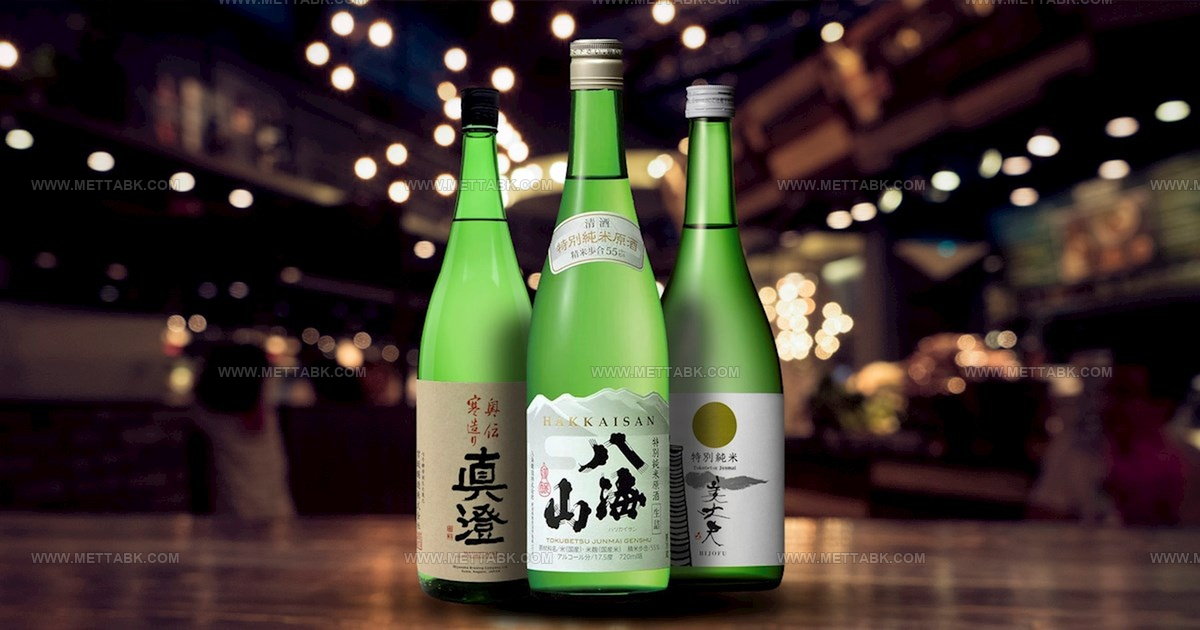
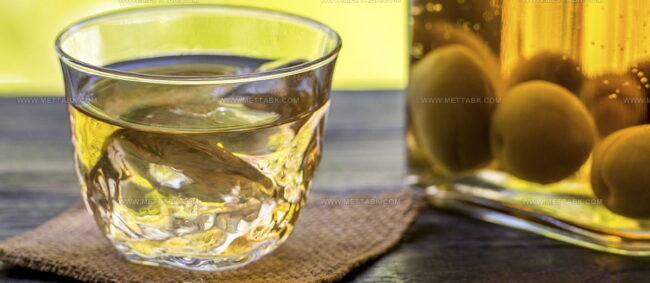
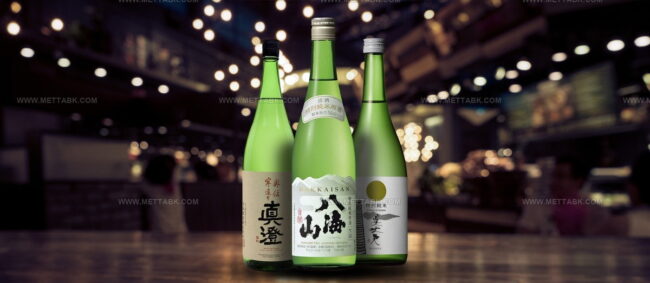
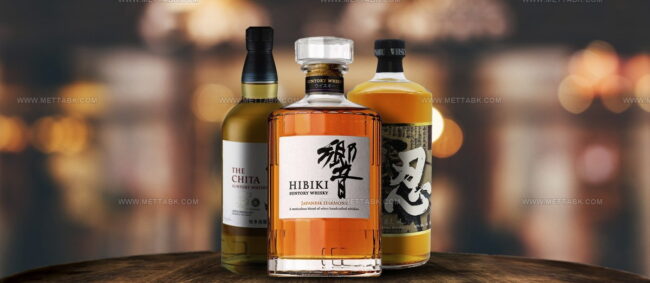
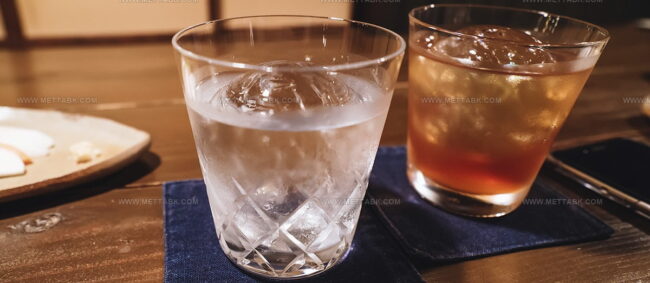
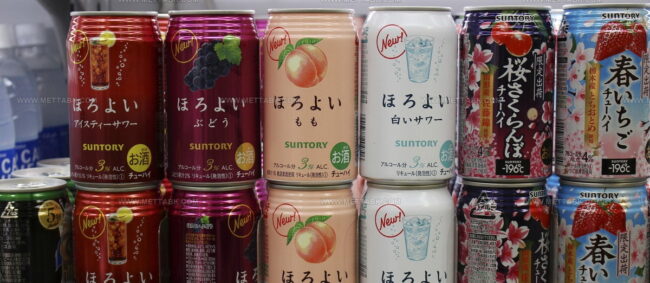
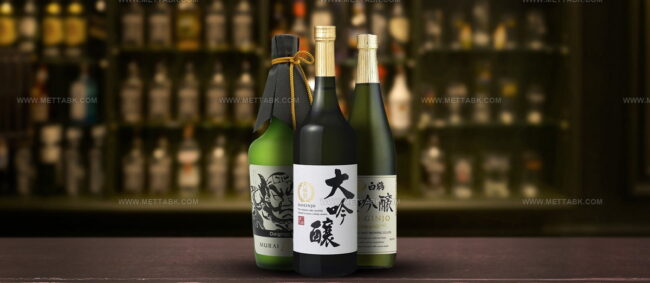



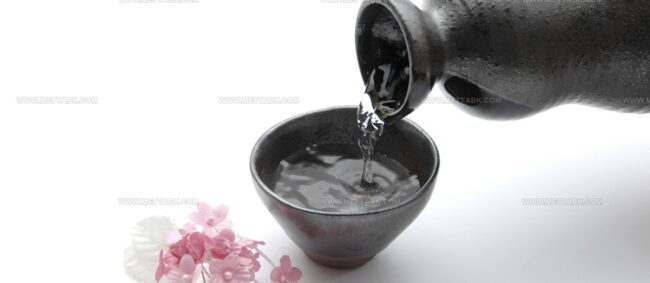


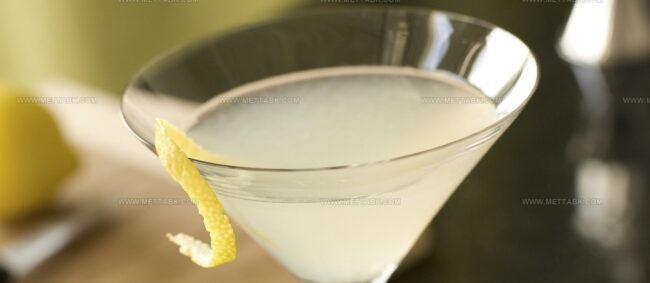
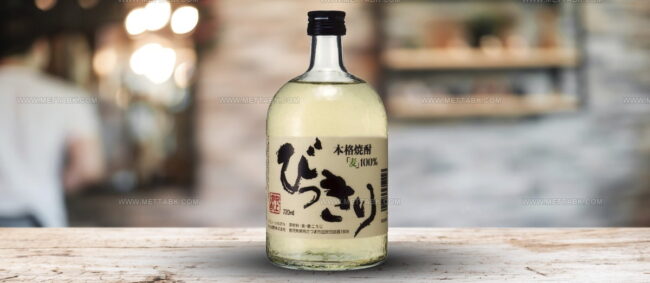
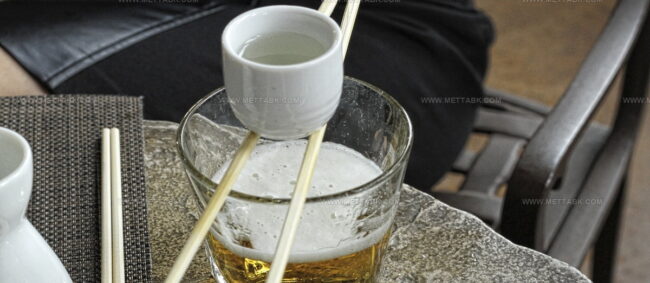
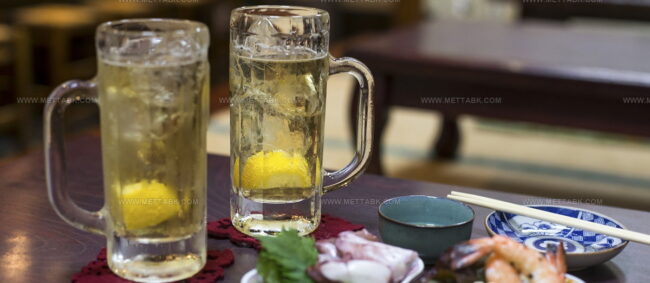

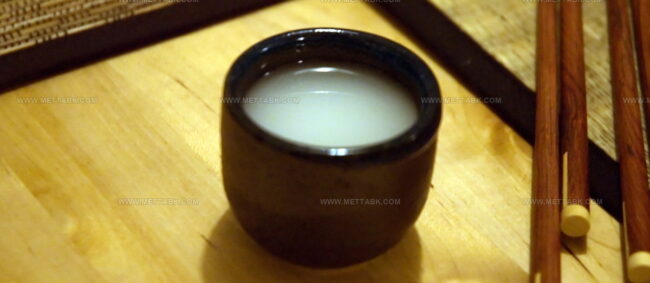
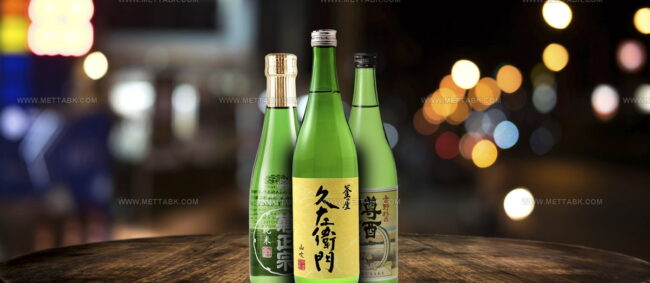
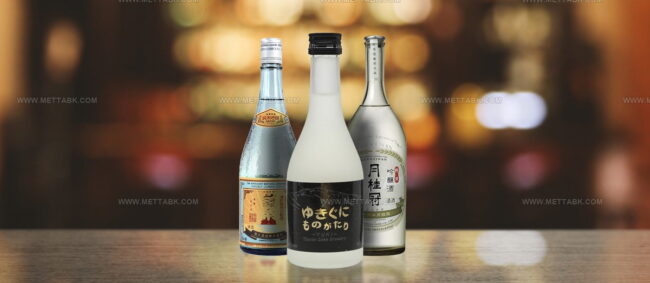

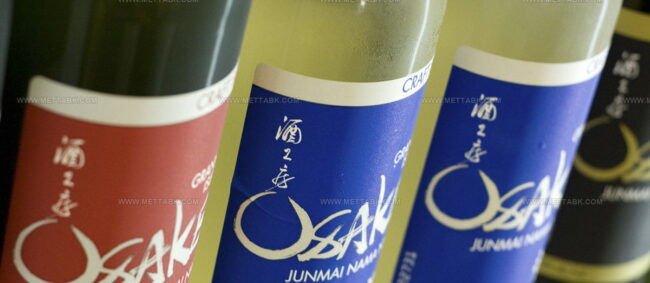
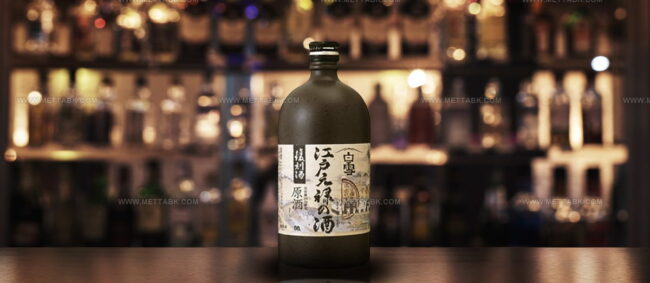
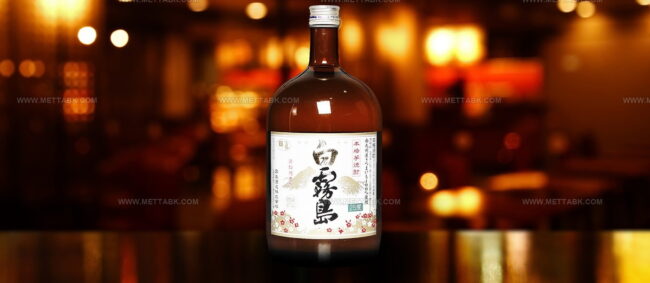
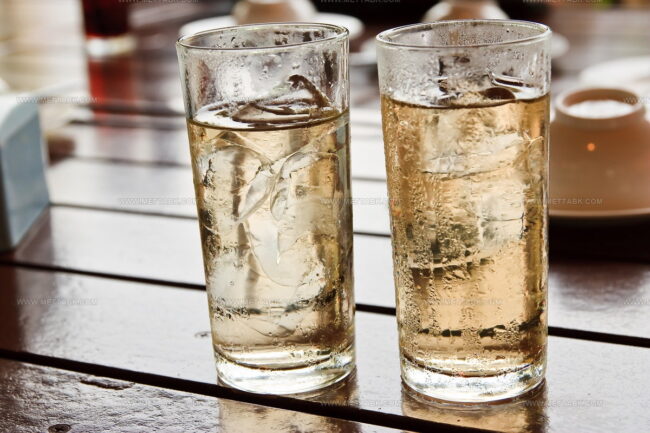

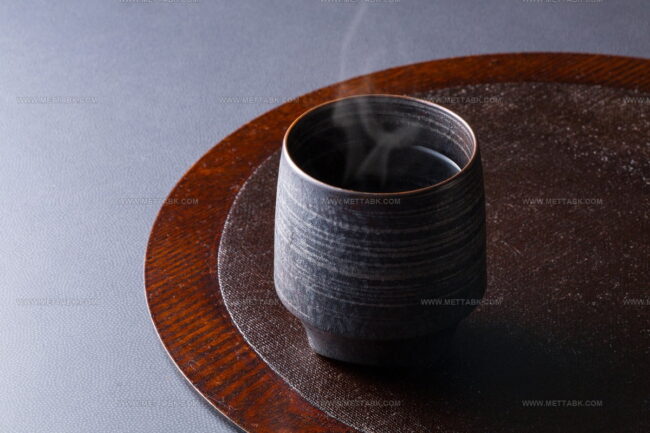


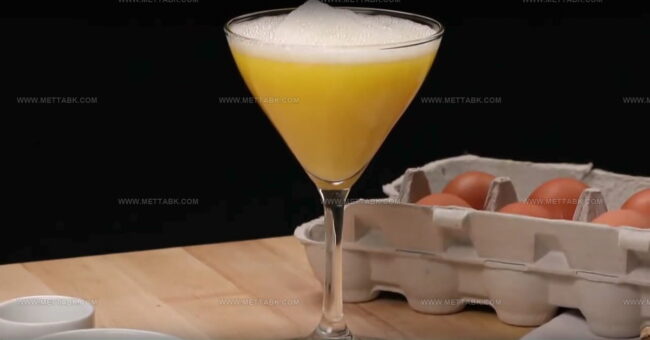
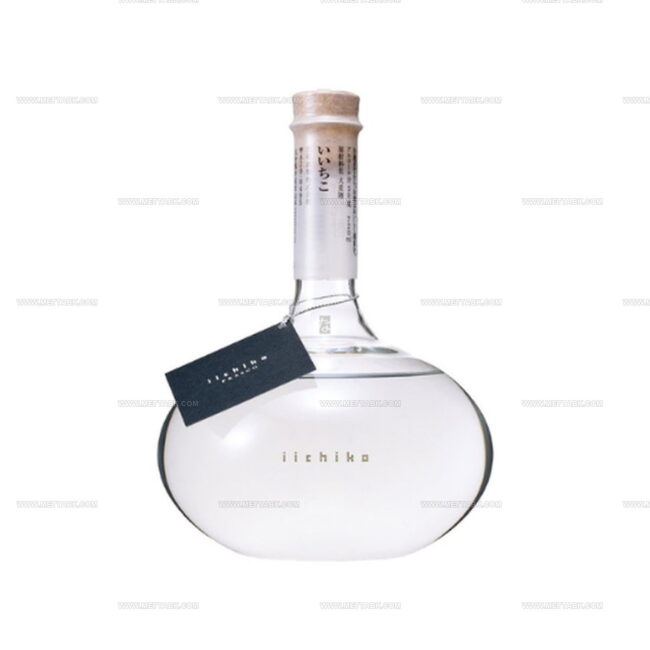
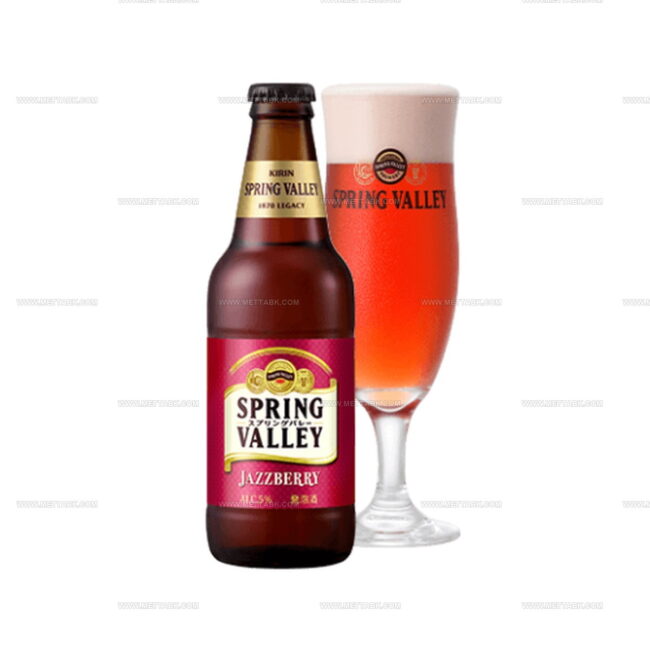
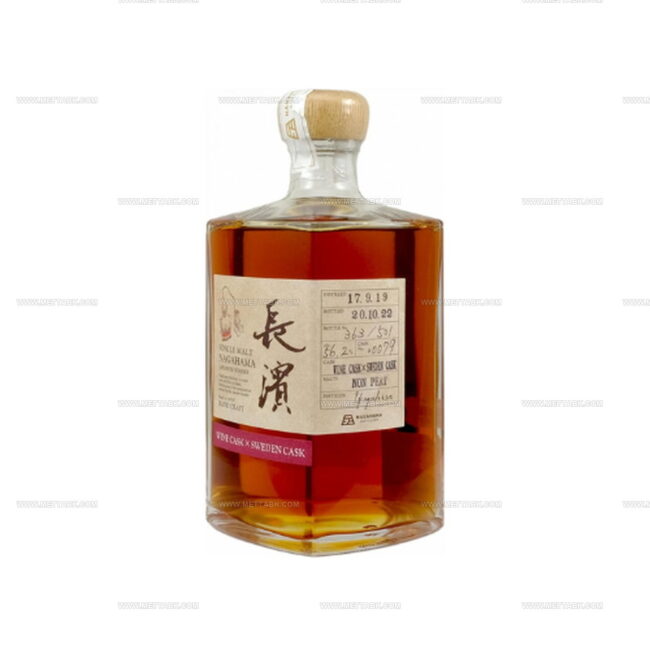
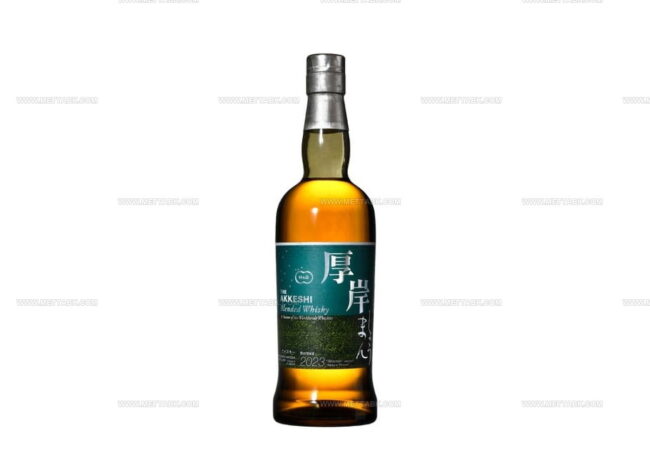
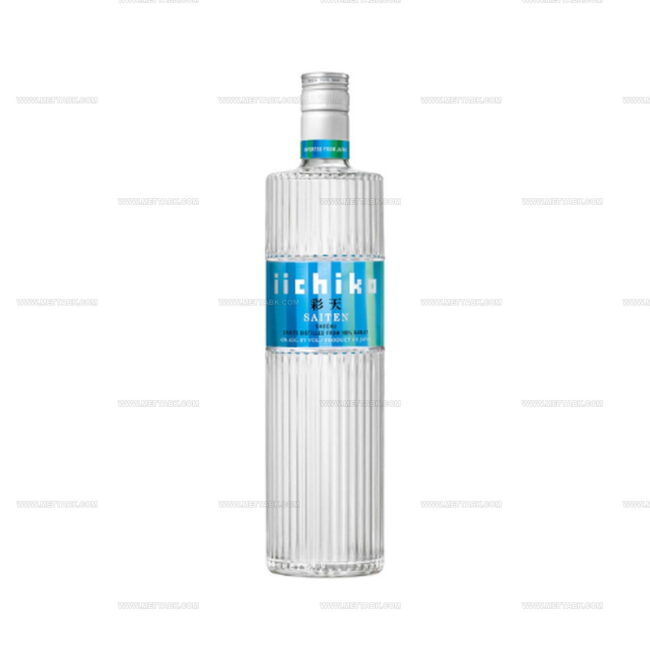
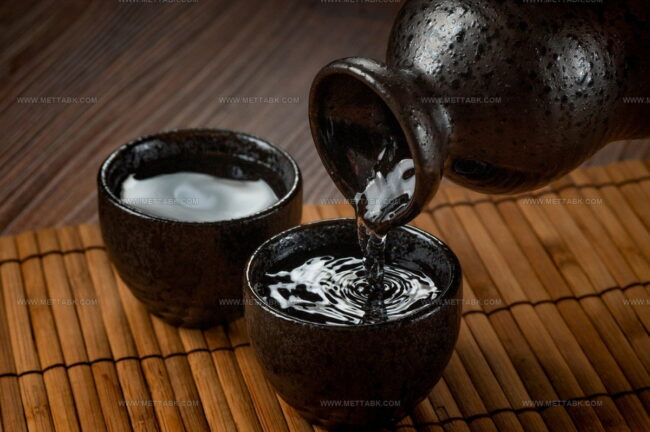
Clara Bennett
Contributing Recipe Developer & Food Writer
Expertise
Baking and Pastry Development, Gluten-Free and Allergy-Friendly Recipe Creation, Culinary Storytelling and Food Journalism, Recipe Testing and Standardization, Southern Comfort Foods and Modern Twists
Education
Sullivan University – National Center for Hospitality Studies
Associate Degree in Culinary Arts
Focus: Baking and Pastry Arts, Recipe Testing, and Culinary Journalism.
Clara specialized in crafting desserts that blend classic Southern comfort with modern techniques, while developing strong writing skills to tell the story behind every dish.
Lane Community College (Certificate Program)
Certificate in Food Writing and Photography
Focus: Culinary storytelling, recipe formatting, food styling, and visual presentation.
Clara’s love of baking started young, powered by homemade pies, biscuits, and stories passed around the family table.
After earning her degree at Sullivan University and a food writing certificate at Lane Community College, she turned her passion into a craft: sharing recipes that are simple, soulful, and always full of heart.
She’s big on bold flavors, flexible ideas, and creating sweets that fit any table (yes, even if you’re gluten-free). When she’s not baking, you’ll find her wandering farmers’ markets, styling food for the next photo shoot, or working on her ever-growing recipe journal.